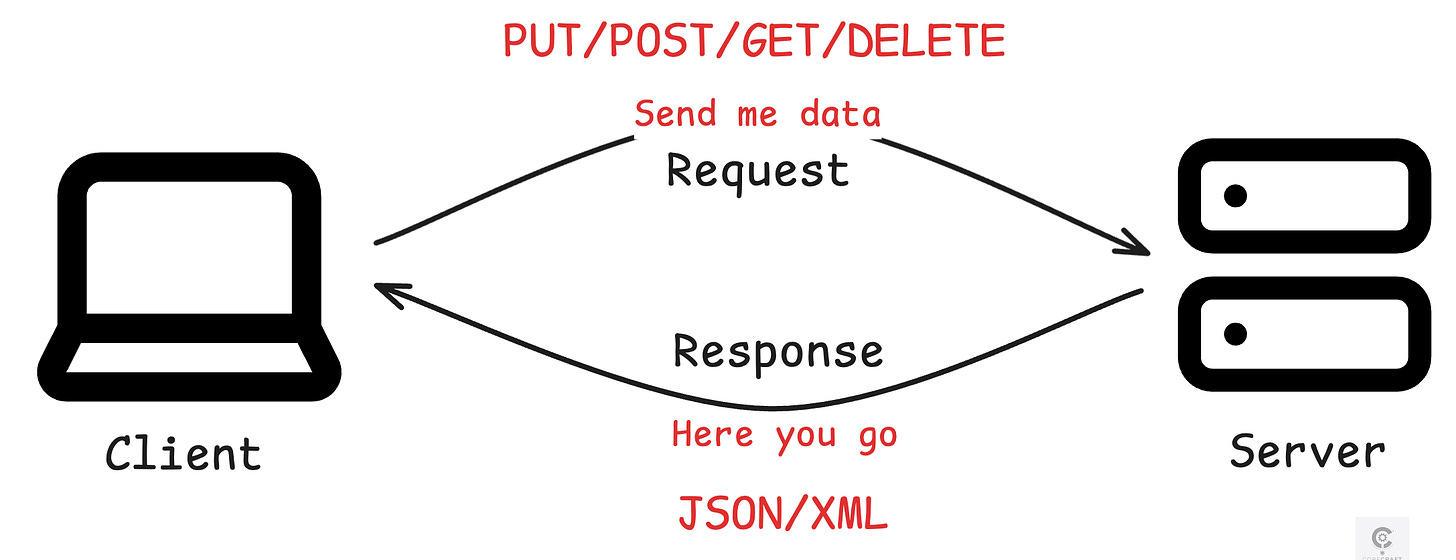Webhook vs API: Decoding the Differences
#10 Discover how APIs and Webhooks work and when to use them for seamless app communication.
Imagine being off-grid during a camping trip—your weather app fails to load, maps don’t work, and messaging apps are useless. Now, picture having perfect internet and cellular connection but still facing the same issues. That’s how ineffective our technology would be without APIs and Webhooks.
These two tools are the backbone of modern software communication, enabling apps to interact seamlessly. But how do they differ, and when should you use one over the other? Let’s break it down.
What is an API?
An API (Application Programming Interface) is a set of rules and protocols that allows one software application to interact with another. It works on a request-response model: App A sends a request to App B, and App B responds with the requested data or action.
APIs are like a waiter taking your order (request) and bringing your food (response).
Examples:
Fetching weather data from a weather service API.
Integrating payment gateways like Stripe or PayPal into an e-commerce platform.
Importance:
APIs are the backbone of modern software development. They enable seamless integration between different systems, making it easier to build complex applications without reinventing the wheel.
What is a Webhook?
A Webhook is a type of event-driven API. Instead of waiting for a request, a Webhook automatically sends data to another app when a specific event occurs.
Think of it as a "push notification" for your app.
Examples:
Receiving a notification when a new order is placed on an e-commerce site.
Getting updates from a GitHub repository when someone pushes new code.
Importance:
Webhooks are perfect for real-time updates. They eliminate the need for constant polling (repeatedly checking for updates), making systems more efficient and responsive.
Key Differences Between Webhooks and APIs
While both Webhooks and APIs facilitate communication between applications, they differ in how they operate:
APIs: Request-driven. The client initiates the communication by sending a request to the server.
Webhooks: Event-driven. The server initiates the communication by sending data to the client when an event occurs.
Understanding these differences helps you choose the right tool for your use case.
APIs are better for on-demand data retrieval, while Webhooks excel in real-time event notifications.
When to Use Webhooks vs APIs
Deciding whether to use a Webhook or an API depends on your application's needs:
Use APIs to fetch data on demand or perform specific actions (e.g., retrieving user information or processing payments).
Use Webhooks when you need instant updates or notifications about events (e.g., tracking order status or monitoring system changes).
Importance:
Choosing the right tool ensures your application is efficient, scalable, and responsive to user needs.
Conclusion:
APIs and Webhooks are essential for modern application development but serve different purposes. APIs are request-driven and ideal for on-demand data retrieval, while Webhooks are event-driven and perfect for real-time updates.
Whether you're building a simple app or a complex system, understanding the strengths and limitations of Webhooks and APIs will help you design better solutions.
Thank You for Reading!
If you found this article helpful, hit the ❤️ button and consider subscribing for more content every week.
Have questions or suggestions? Leave a comment—I’d love to hear your thoughts!
Stay connected:
Follow me on LinkedIn and X to stay updated with my latest posts.



